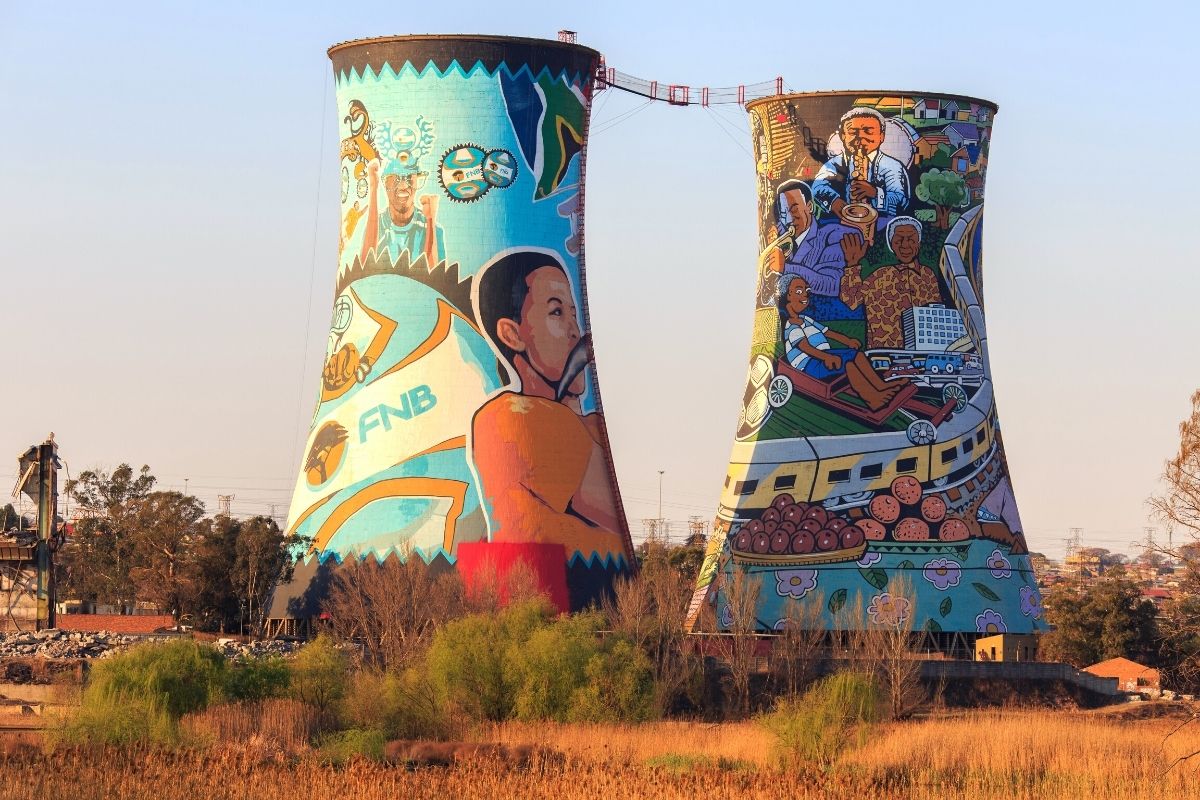The 8-Minute Rule for Johannesburg North Attractions
The 8-Minute Rule for Johannesburg North Attractions
Blog Article
The Ultimate Guide To Johannesburg North Attractions
Table of ContentsMore About Johannesburg North AttractionsJohannesburg North Attractions for DummiesMore About Johannesburg North AttractionsGet This Report on Johannesburg North AttractionsSome Known Questions About Johannesburg North Attractions.What Does Johannesburg North Attractions Mean?
The city owes its location to the visibility of a much more priceless resource: gold. The city grew on the edge of the Witwatersrand Key Reef, a below ground stratum of gold-bearing quartz-silica conglomerate that arcs for hundreds of miles under the Highveld. The majority of the gold mines in the city ceased procedure in the 1970s, however in its day the Witwatersrand gold industry made up even more than 40 percent of the globe's annual gold manufacturing.Johannesburg has a warm environment. The city enjoys concerning 8 hours of sunshine per day in both wintertime and summer.
What rainfall the city obtains falls practically specifically in the summertime months, commonly in incredible late-afternoon electric storms. Air air pollution positions a considerable problem, particularly in the cold weather, when thermal inversions impede the westward circulation of air from the Indian Sea. Air pollution is most severe in the largely worked out Black territories on the city's periphery, where numerous locals still count on coal for fuel.

Not known Details About Johannesburg North Attractions
The balance of the city is inhabited by whites. Accommodation varies in personality and quality.
Physical development, although rather restricted by transport, proceeded promptly as migration to South Africa, and Johannesburg in particular, enhanced considerably.
The majority of inadequate suburbs were combined, with bad blacks and whites cohabiting, although the wealthy suburbs were typically scheduled for whites. This altered with the political election of the National Event in the 1948 elections, who began to formalise the system called racism. Discrimination formally designated which residential areas each race might live in under the Team Areas Act.
The previous system of eleven numbered regions was reorganised in 2006. Marshalltown, as seen from the top of the Carlton Centre. The M1 and M2 run behind the structures, and the southern residential areas extend past the freeway boundary. The internal city of Johannesburg is located within the city's Region F. The number of individuals living in the internal city on a casual basis is unidentified, as numerous are prohibited immigrants. The unemployment, education and learning, and age profiles of the location are all unknown, due to the problem of obtaining reliable information concerning the area.
Not known Details About Johannesburg North Attractions
Centred on the CBD, the region includes the suburban areas of Yeoville, Bellevue, Troyeville, Jeppestown, and Berea to the eastern. To the west it spreads out to Pageview (Johannesburg North attractions) and Fordsburg. There are little industrial parks to the south, such as pop over to this site City West-Denver and Benrose. Around 800,000 commuters pass through the inner city on a daily basis, and it works as a local shopping node for site visitors from the southerly residential areas. Yeoville and Bellevue have a mix of apartment and single property devices on tiny whole lots. The region lies on a mountainous divide that runs from east to west. One of the most obvious geographic feature is Observatory Ridge, which is called for the large observatory located on it. The recreational rooms are no much longer utilized, as a result of security issues.

The 10-Minute Rule for Johannesburg North Attractions
R. Tambo International Airport Terminal). The eastern suburbs are some of the oldest areas of Johannesburg, there are huge areas of Jewish and various other European backgrounds, most of the populace is English talking. There are 3 golf links along with a number of secured ridges with viewsites. There are a number of strong and up-market home entertainment and buying locations in the east such as the Eastgate Purchasing Centre and the Greenstone mall.
The area is mostly made up of old "matchbox" houses, or four-room residences developed by the government, that were developed to offer cheap holiday accommodation for black employees throughout discrimination. Soweto is an abbreviation, standing for "South Western Townships". Road after road around is lined with matchboxes; however, there are a couple of smaller locations where flourishing Sowetans have built houses that are extra comparable in stature with those in more upscale suburban areas.
Hostels are one more prominent physical feature of Soweto. Originally developed to house male migrant employees, numerous have been boosted as houses for pairs and family members. The N1 Western Bypass skirts the eastern border of Soweto. The residential area was not traditionally enabled to create work centres within the location, so nearly all of its homeowners are travelers to other parts of the city.
Johannesburg North Attractions Can Be Fun For Anyone
The N1 Western Bypass attaches the north residential areas with the north-western suburbs. The try this website houses in the northern suburbs are mainly official, without any considerable areas of informal housing, or real estate that does not have a long-term structure. Although this is a well-known location, there is a fad of land usage change from property to industrial, specifically along major arterial roads and around see recognized nodes.
The location is well linked to roadway networks, particularly along the north-south axis created by the M1 and N1. Roadways to the east and west are much less well established, as there are no highways travelling in that instructions. Towards the northern boundary of the city, the thickness of development reduces, leaving large areas of primitive land around Midrand.
9 Easy Facts About Johannesburg North Attractions Shown
The very first residential area to the north of the central city is Parktown, which is located on a hill neglecting the central city and Hillbrow. It has several wealthy residents and Edwardian-design manors, along with the Education and learning and Clinical universities of the College of the Witwatersrand. The big concrete Charlotte Maxeke Johannesburg Academic Health Center controls the sky line of Parktown.
Report this page